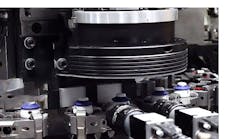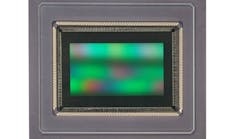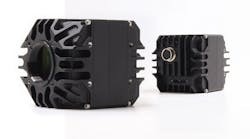APRIL 22--The aggregate market volume for industrial Ethernet devices has grown at more than a 50% annual rate during the last two years, despite a difficult worldwide market for automation equipment, according to a study by the ARC Advisory Group (Dedham, MA;ARCweb.com). From this point forward, the growth of Ethernet at the device level will likely be accelerated, by both increasing user acceptance and further penetration of Ethernet as the preferred device interface chosen by suppliers.
The worldwide market for industrial Ethernet devices is expected to grow at a compounded annual growth rate of 84.1% over the next five years. The market was 286.8 thousand nodes in 2002 and is forecasted to be over 6.06 million nodes in 2007. "Further penetration of Ethernet at the device level will profoundly impact the future architecture of manufacturing automation," says senior analyst Harry Forbes, the principal author of ARC's "Ethernet at the Device Level Worldwide Outlook".
End users have come to realize the potential offered by Ethernet with TCP/IP protocols to endow devices with Web-based access and similar services. Their familiarity with the benefits no doubt propelled its growth in the automation space, despite challenging times and competition from entrenched device networks. Concerns about its potential nondeterministic behavior have been addressed successfully. The issue of Ethernet ruggedness for harsh environments is also being addressed.
Other issues of Ethernet's industrial suitability concern the need for device power, network fault-tolerance, and the ability to lower installation cost through multi-drop topologies. Device power via Ethernet connections will be addressed by worldwide standards efforts that should be ratified in 2003. For fault tolerance, there are both standard and proprietary solutions. In general, progress toward Ethernet acceptance at the device level of the industrial automation hierarchy is being made steadily.
The increases in shipments of Ethernet devices can be attributed to a very high level of product introductions during the past two years, particularly by mainline automation suppliers. ARC expects these product introductions to continue. In addition to ongoing research and development efforts within the IT sectors and academia, a growing number of suppliers are working to create Ethernet-enabled products tailored for industrial use. Mainline IT infrastructure suppliers have also created new products targeted at the manufacturing sector in the wake of the popping of the Internet bubble market that fed their growth through the late 1990s.




